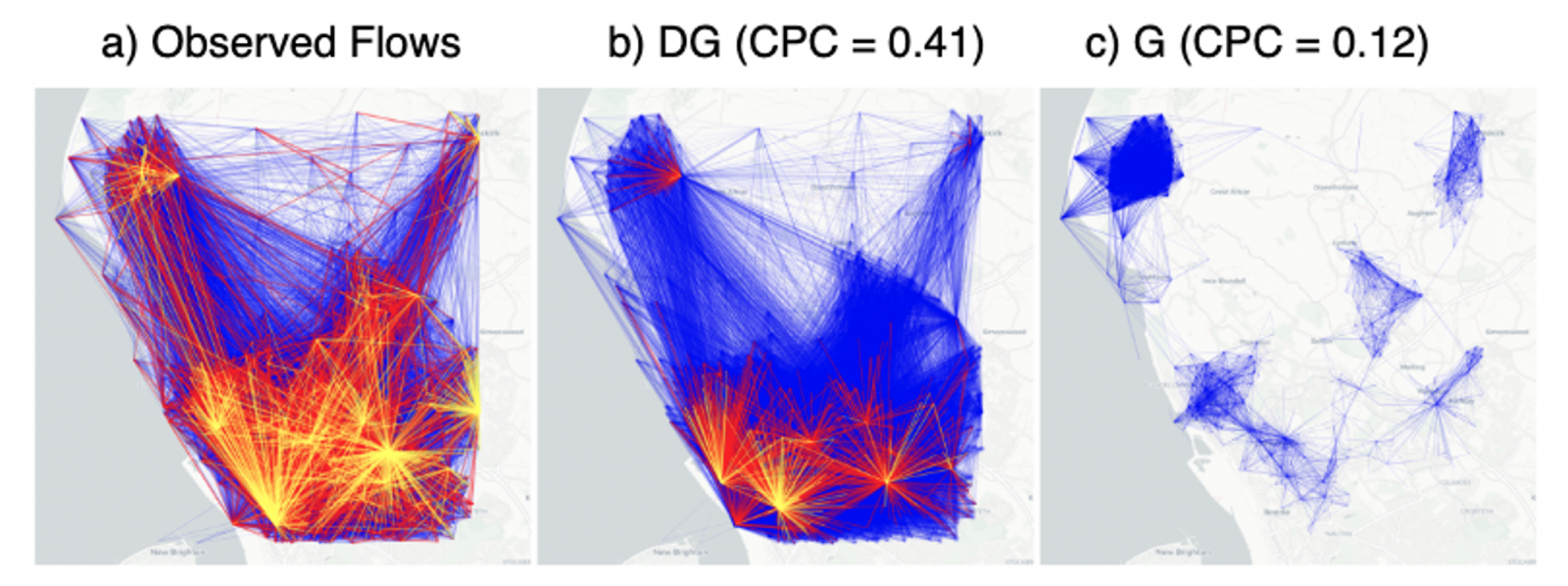Why do we move? The Deep Gravity algorithm explains mobility flows using Artificial Intelligence
The traditional model used for the generation of synthetic mobility flows is the "gravity" model. Inspired by Isaac Newton's law of universal gravitation, it establishes that the mobility flow between two places (for example, two neighbourhoods of a city) is proportional to their population and inversely proportional to their geographical distance. Unfortunately, in practice, the gravitational model is often inaccurate because it is based on only two variables (distance and population) and is unable to capture complex relationships between them.
At ISTI-CNR, in collaboration with Bruno Kessler Foundation in Trento and the Argonne National Laboratory in the USA, we developed Deep Gravity, an algorithm that adds two fundamental ingredients to the gravitational model: 1) the use of variables that describe the points of interest (POIs) in a place (restaurants, hotels, hospitals, streets); and 2) the ability to capture complex relationships between these variables thanks to the use of deep learning. Extensive experiments conducted in three countries (Italy, England and the state of New York) have shown that Deep Gravity can predict flows with an accuracy up to 1000 times better than that of the gravitational model.
Furthermore, using "Explainable AI" techniques (explainable Artificial Intelligence), we explain the reasons behind the movement flows between census areas in the three states under analysis. Unlike what is predicted by the gravitational model, the variables that drive the movements vary from country to country and within the same country, and distance and population are not always the most important. For example, places with ample food, retail, and industrial estates attract more commuters than places with health and commercial points of interest. Furthermore, the motivation in the movements between two locations is not symmetrical: the points of interest that guide the movements from place A to place B are not necessarily the same ones that guide the movements from B to A.
This study (recently published in Nature Communications) is an essential step towards explaining complex phenomena such as human mobility, with important practical implications such as calculating the probability of spread of an epidemic such as COVID-19 based on points of interest in a territory. Moreover, knowing the reasons behind the movements between two locations may help understand the reasons behind the attractiveness of a place and design lockdown interventions that consider the peculiarity of mobility flows.

Figure 1: Real mobility flows (from census data) between locations in England and flows generated by Deep Gravity (DG) and the gravitational model (G). CPC indicates the realism of flows from 0 (low realism) to 1 (high realism).
Author: Luca Pappalardo (KDD - CNR)
Exploratories: Sustainable Cities for Citizens; Demography, Economy and Finance 2.0; Migration Studies; Social Impact of AI and explainable ML
Items in the SoBigData Catalogue:
- https://data.d4science.org/ctlg/ResourceCatalogue/deep_gravity_model
- https://data.d4science.org/ctlg/ResourceCatalogue/validation_of_the_deep_gravity_model
Sustainable Goals:
- (9) Industry, Innovation and Infrastructure
- (11) Sustainable Cities and Communities

